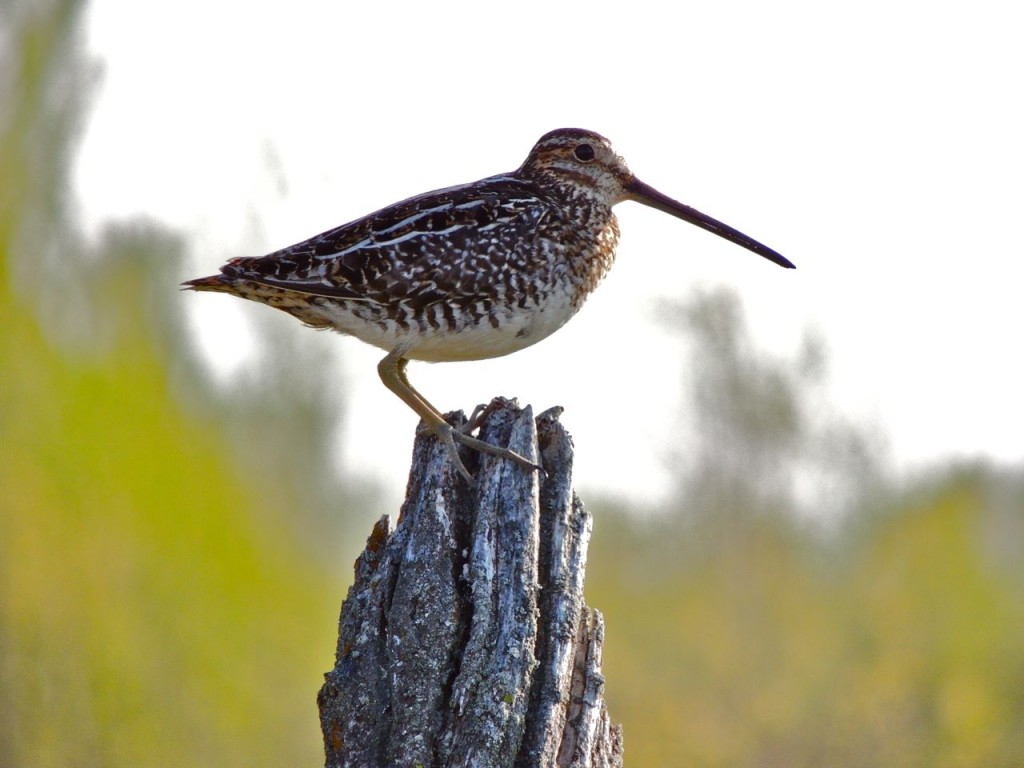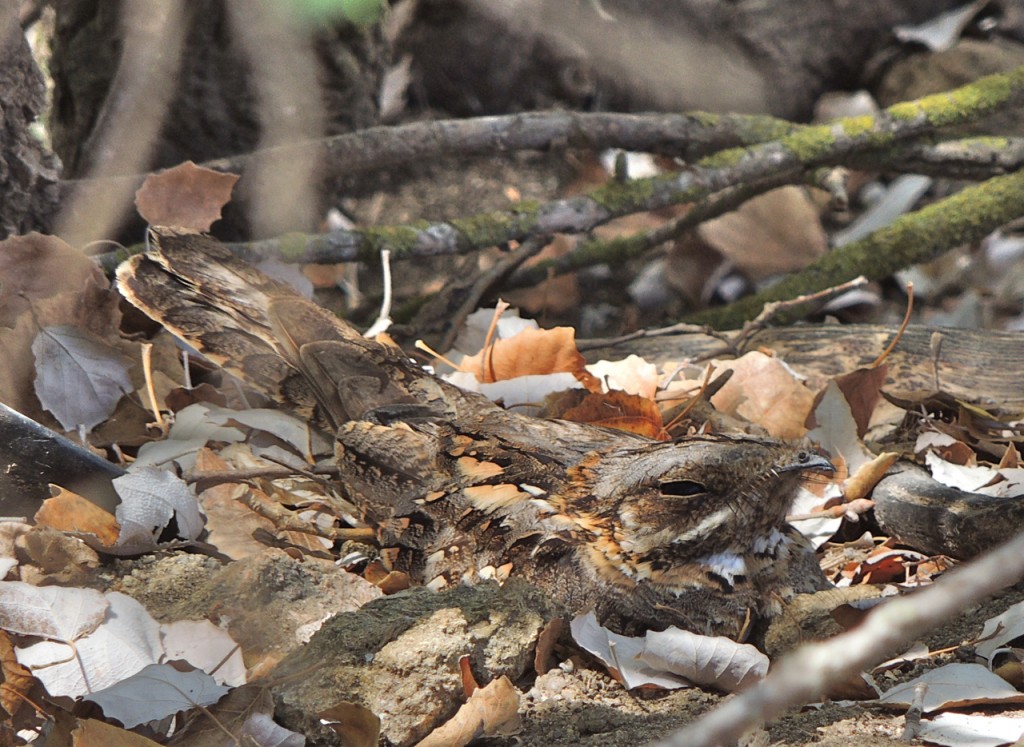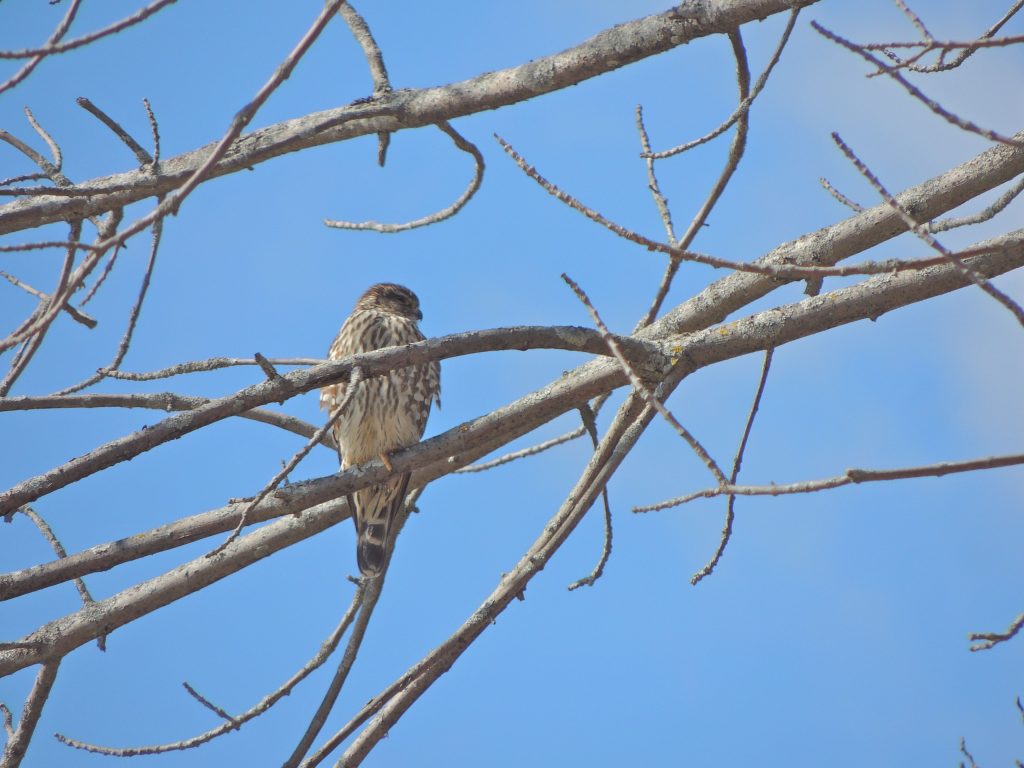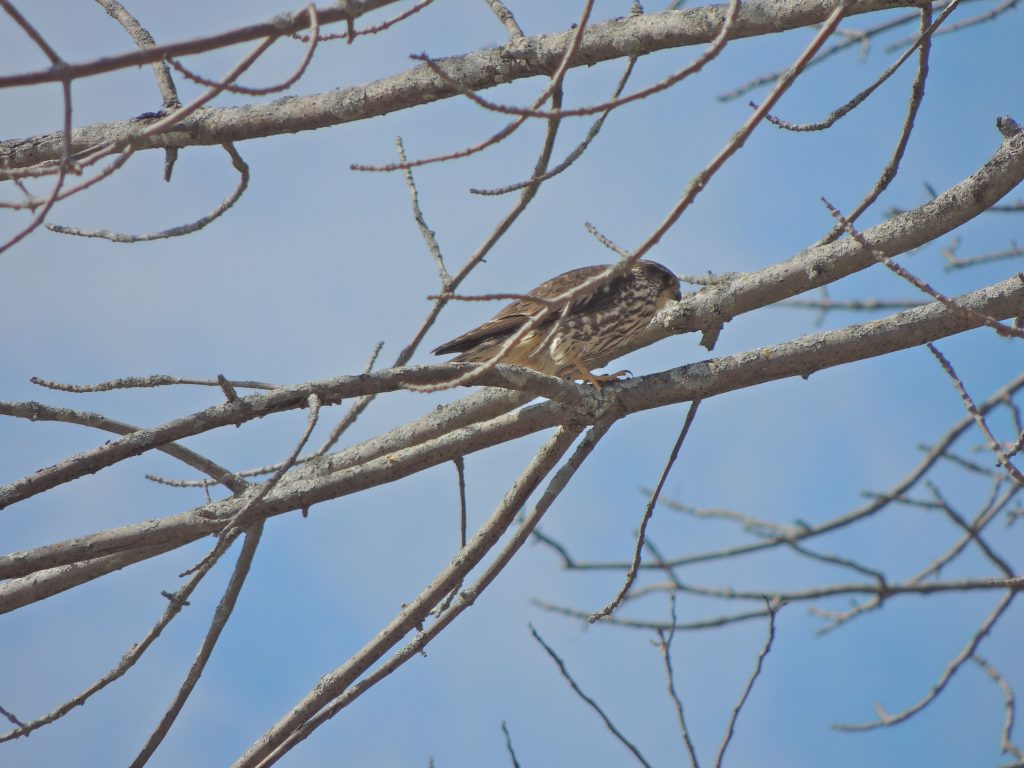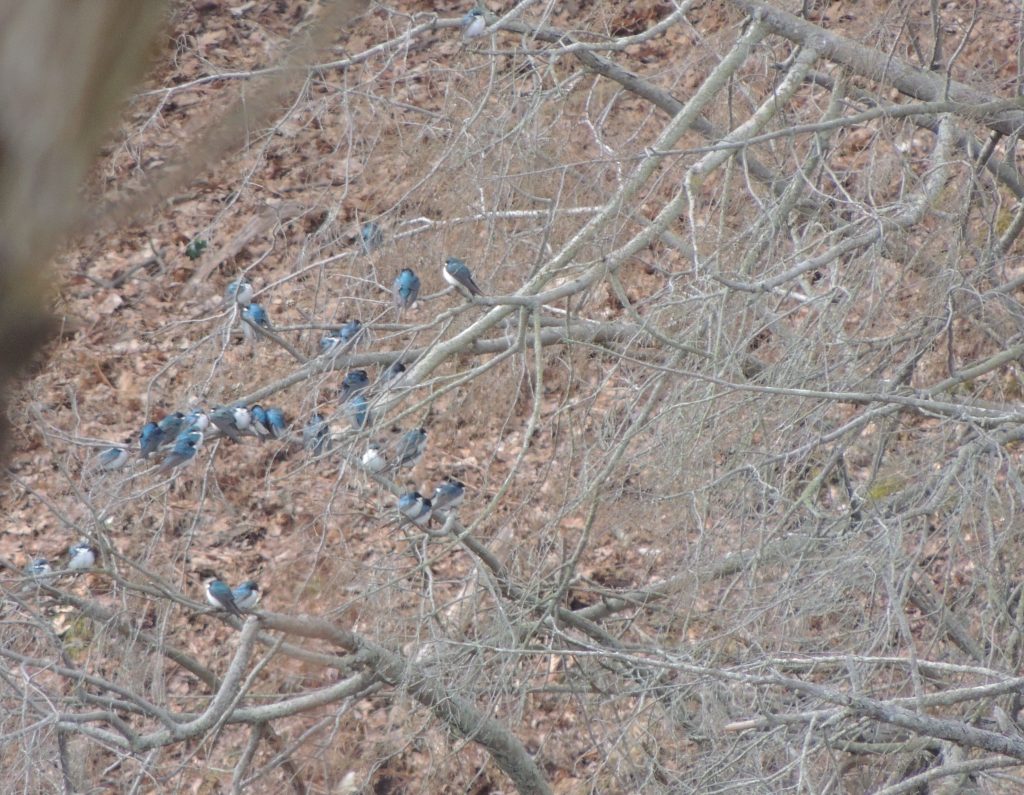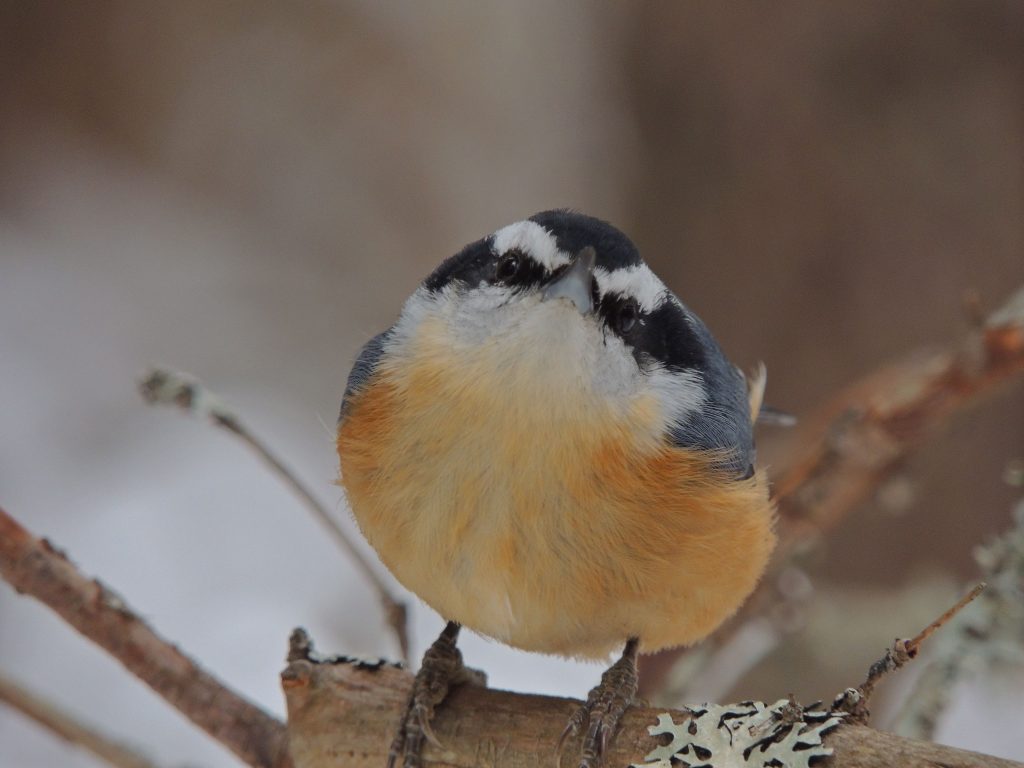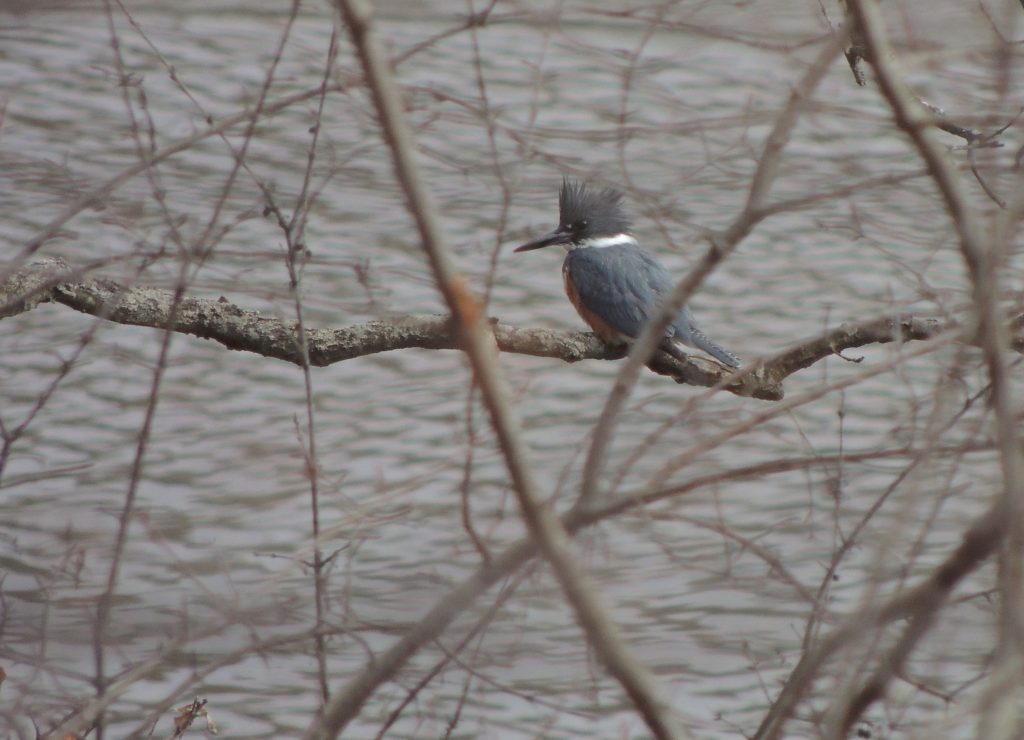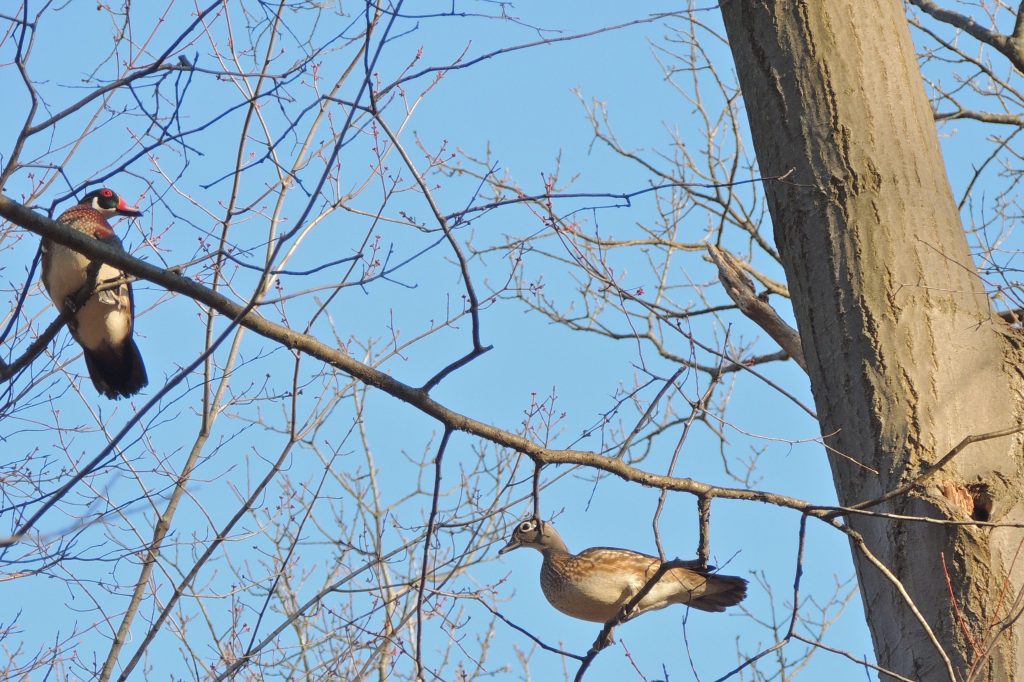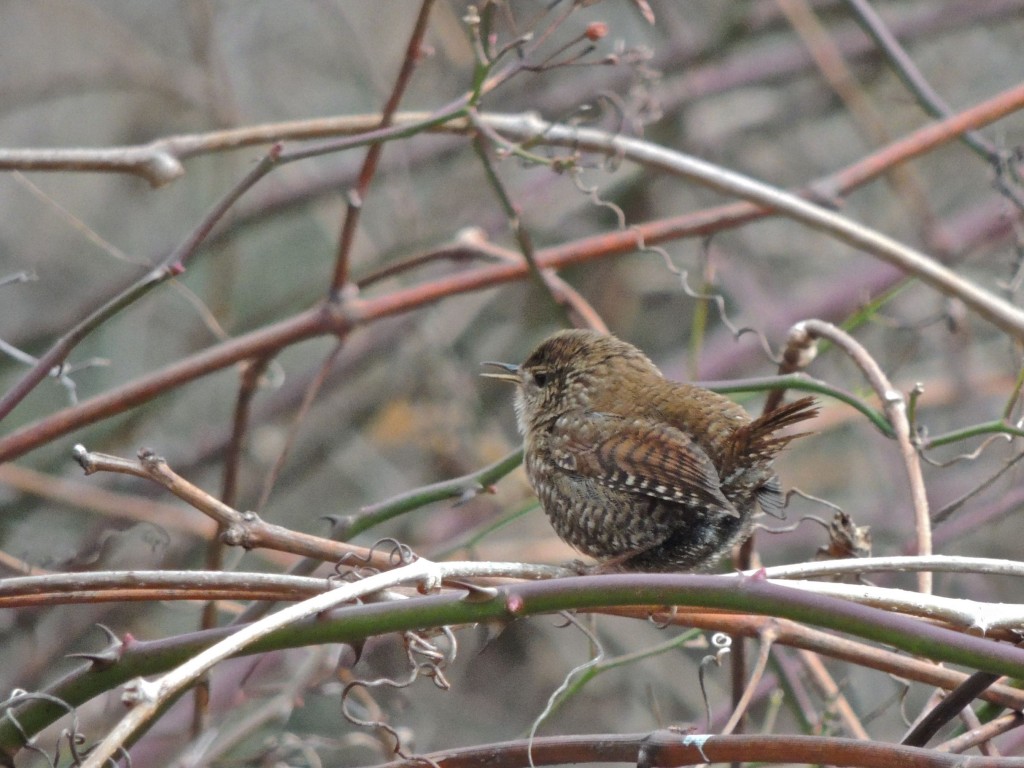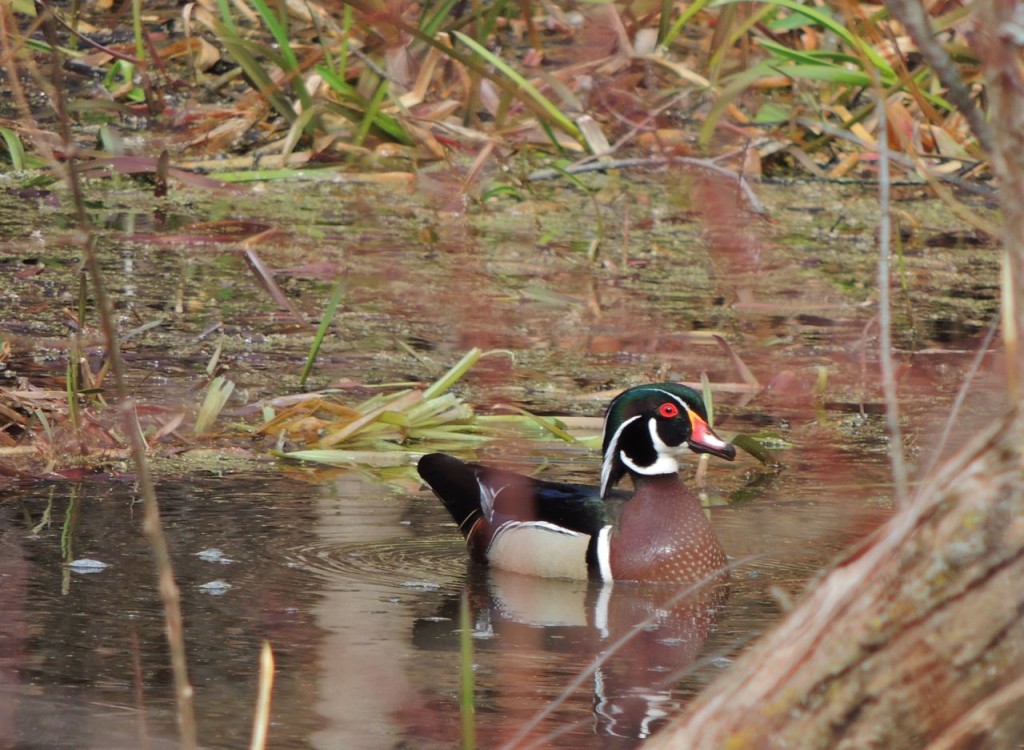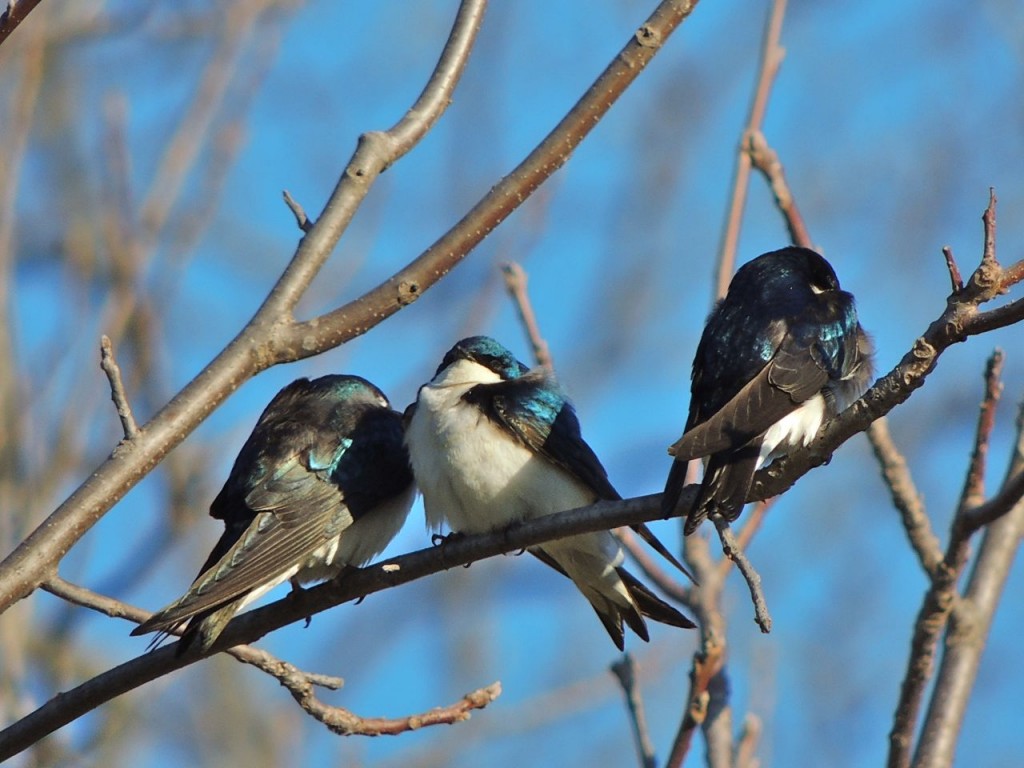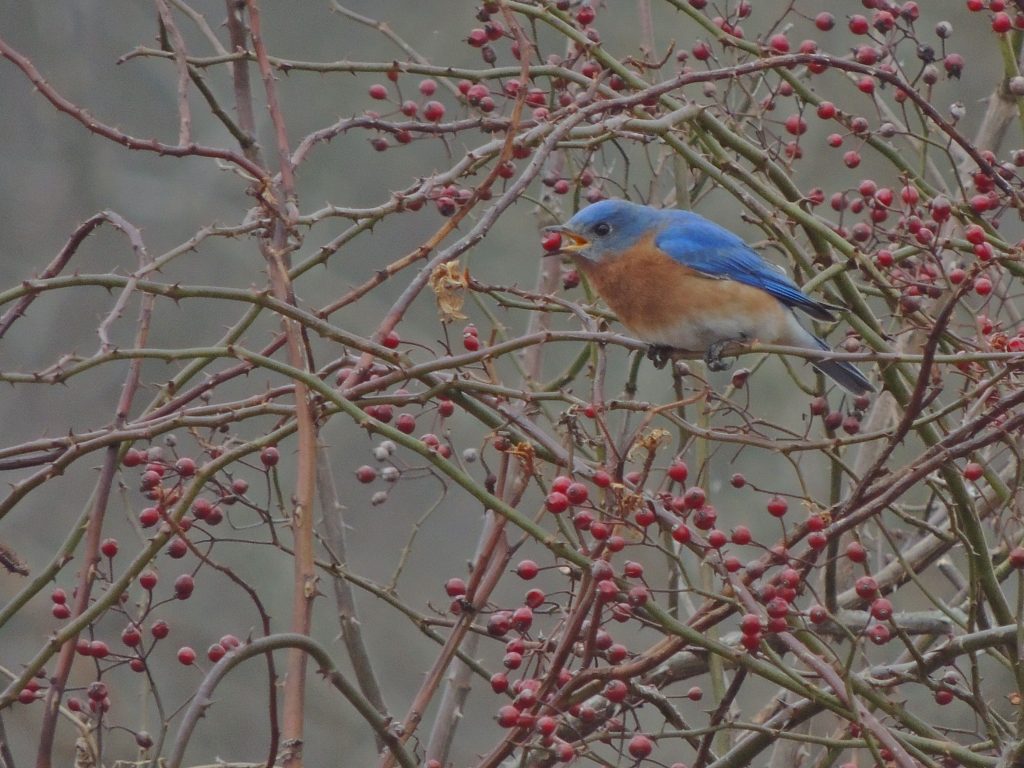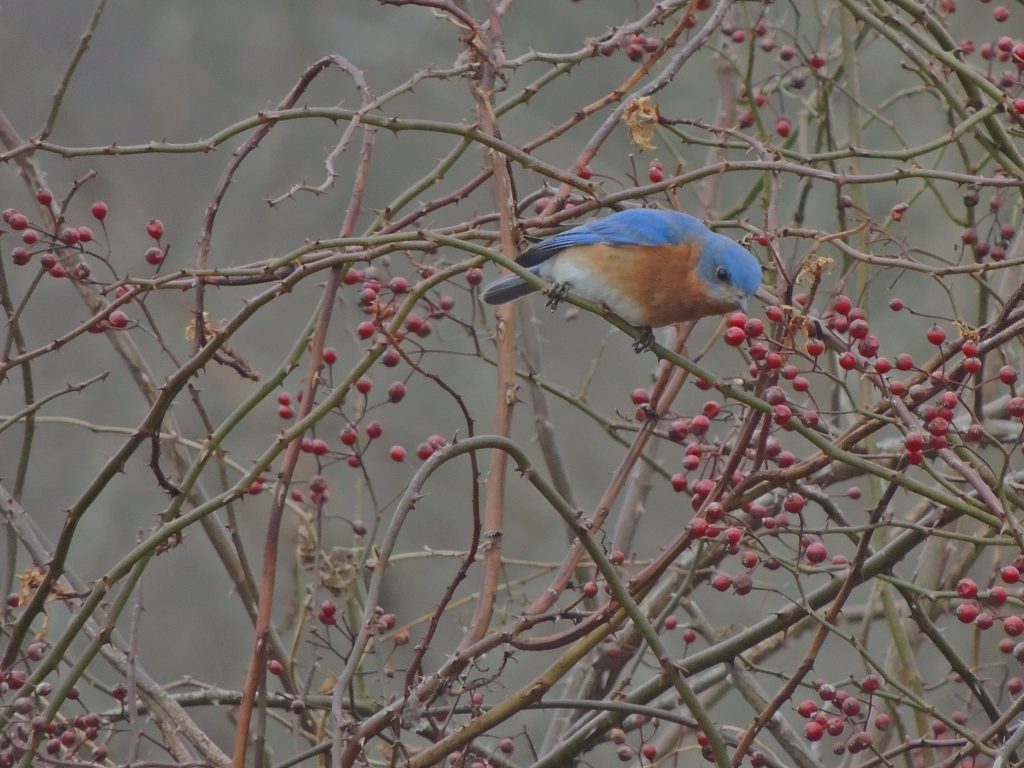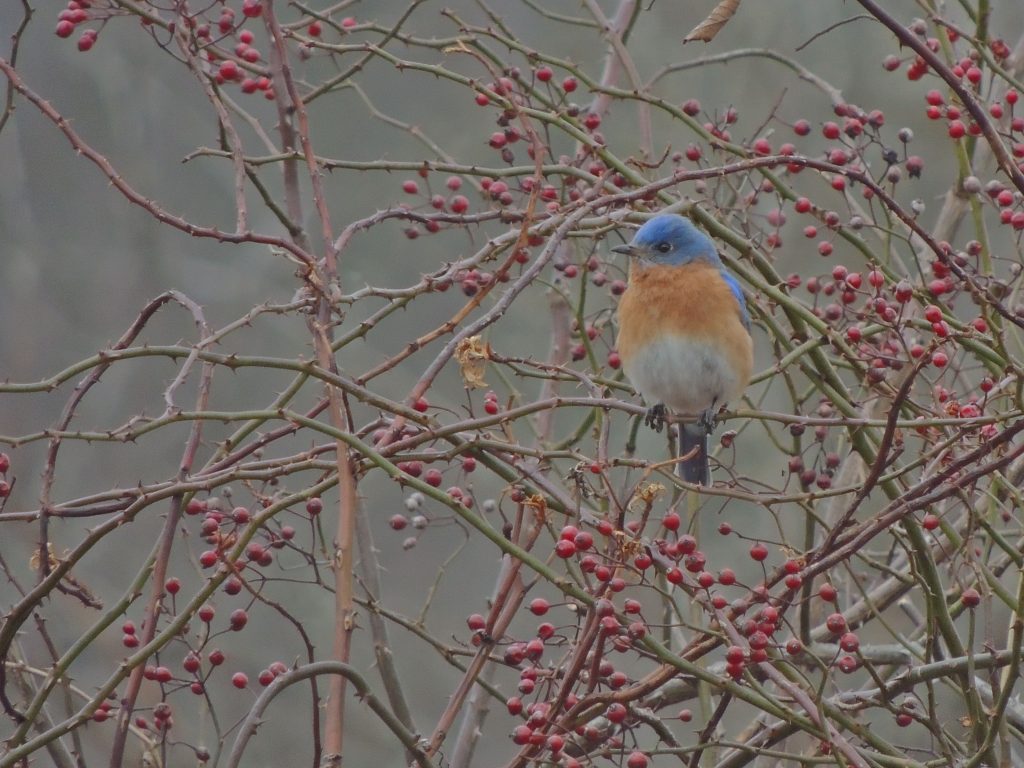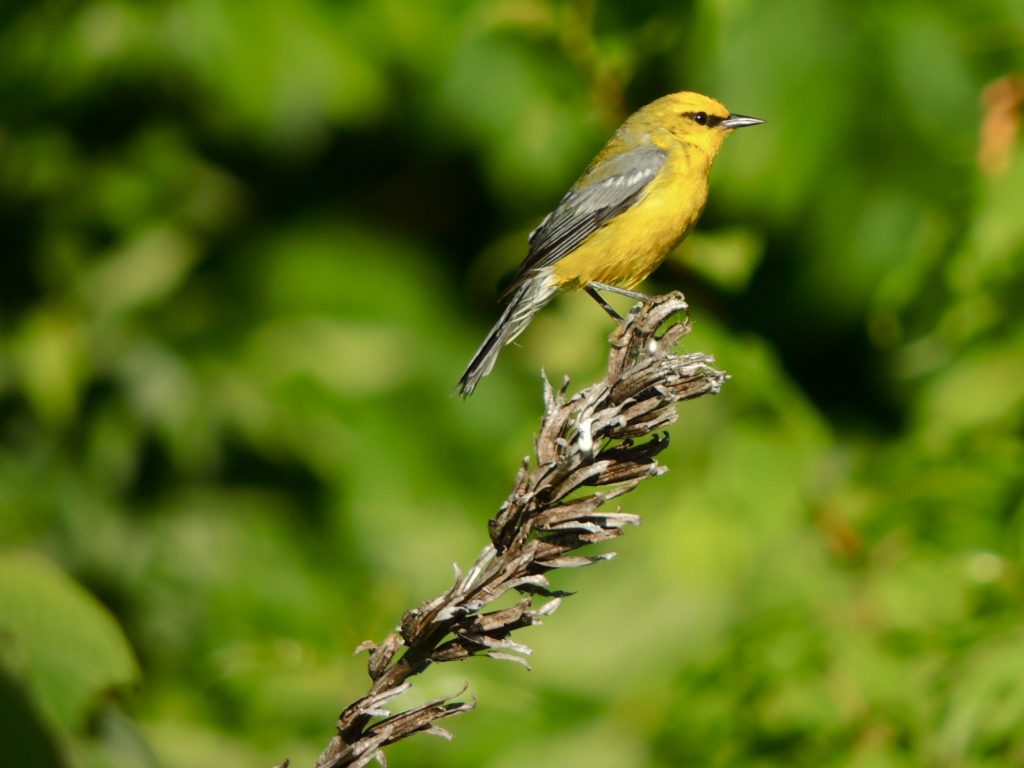April 17 2018 Cootes Paradise, RBG, Hamilton, ON. Bird of the Day today was unquestionably an American Woodcock, actually there were two of them. The story behind it takes a bit of framing, recent weather conditions, the bird’s hunger and a big dollop of luck came together to allow us the privilege of a prolonged look at this relatively common but hardly-ever seen bird.
First the weather. Spring sometimes shows its hand in April but I’m sure the month owes its allegiance more to winter. My diary has as many April references to nasty cold snaps, thick ice and driving snow as it does to patches of unseasonable warmth. We have just emerged from two-and-a-bit days of mistreatment by the convergence of a couple of storm systems, one delivering moisture, rain, the other bringing Arctic temperatures, turning it to ice. All is quiet now but the ground is either frozen and overlaid with crunchy snow and ice, or open and waterlogged. This violent and icy storm was almost certainly fatal to birds of all species as food became totally inaccessible.
And what is it about American Woodcocks that makes them such a novelty? Woodcocks are birds of the woodland-floor and must go unseen and unnoticed. They are cryptically coloured like a scattering of woodland debris and if danger is close they usually become absolutely motionless, freezing on the spot. The only time and place to reliably see them is when the males perform their elaborate spring display flights, and it’s usually dark or nearly so, so you don’t really get much of a look, just glimpses of a bird spiraling up against the fading evening sky.
They need to be where the ground is richly organic and soft enough to use their exaggeratedly long bills to probe for squishy invertebrate food. Books all say they live on a diet of earthworms yet there are no native North American earthworms. Before the arrival of Europeans (bringing familiar plants and, inevitably, earthworms), woodcocks must have lived quite happily on something else. Earthworms or not, for a woodcock to survive a freeze-up it must find soft ground and today’s sites, low boggy hollows with free-running water, met their need.
All of the above is probably more than enough to set the stage, because really all that happened is that we were out birding and happened upon two American Woodcocks. Both sightings were, I’m sure, because the birds had been driven from the frozen forest floor to the margins where it was wetter and most importantly soft. One hastened away from a tangle of blackberry canes heading back to the forest on little bouncing strides, the second and by far the most breathtaking we found in a wide and damp wooded valley. Realising the difficult conditions woodcocks were facing, I half anticipated finding one here so, using binoculars to search the ground methodically and without the usual peripheral distractions, it somehow just popped into view. Unlike the first who promptly left the area the second one opted for the invisibility tactic so crouched motionless for as long as we were anywhere in sight.
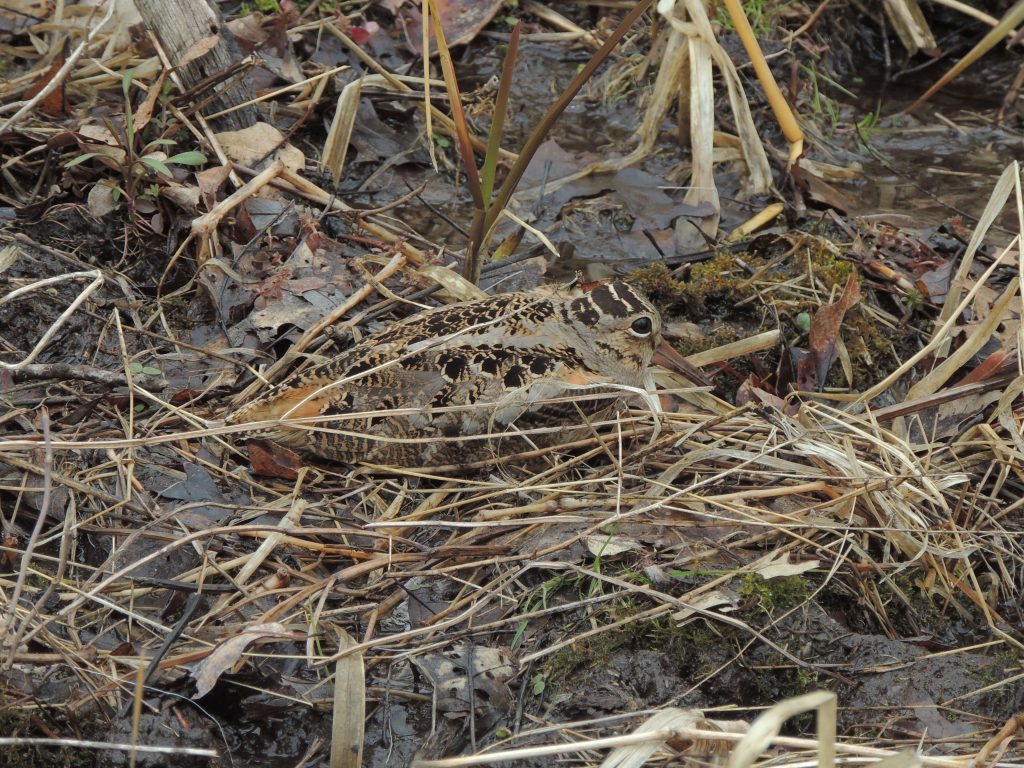
I have included these few photos, but interesting as they may be, they don’t quite capture the way the bird can vanish against the background; you can see it one minute and lose it the next.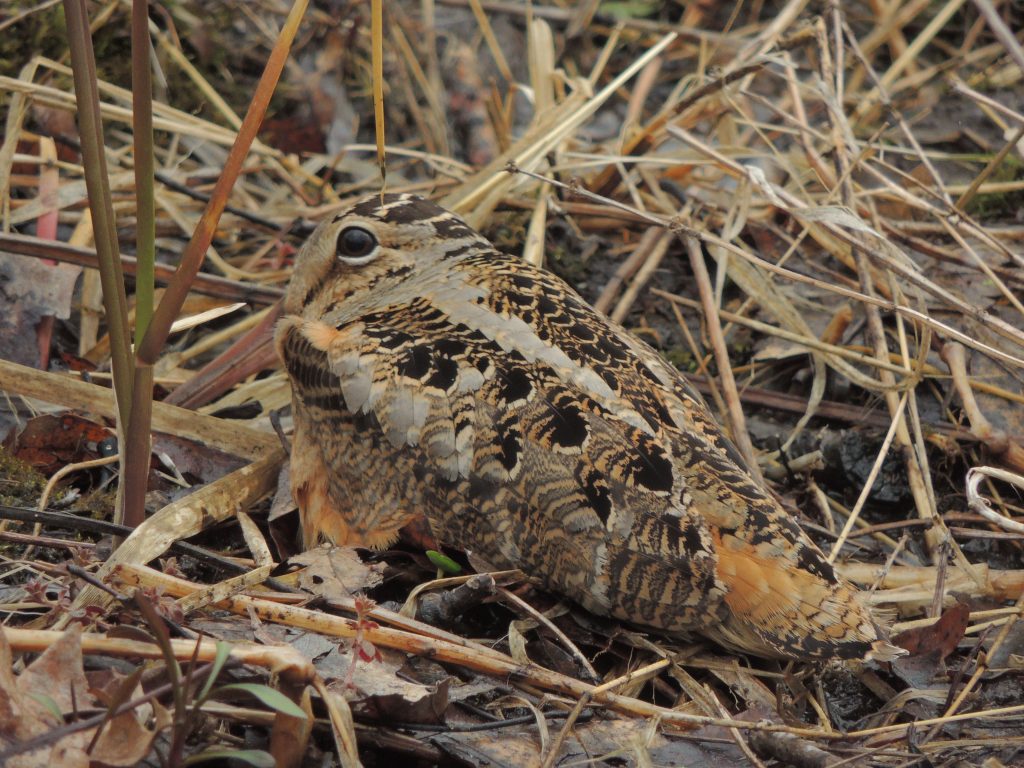
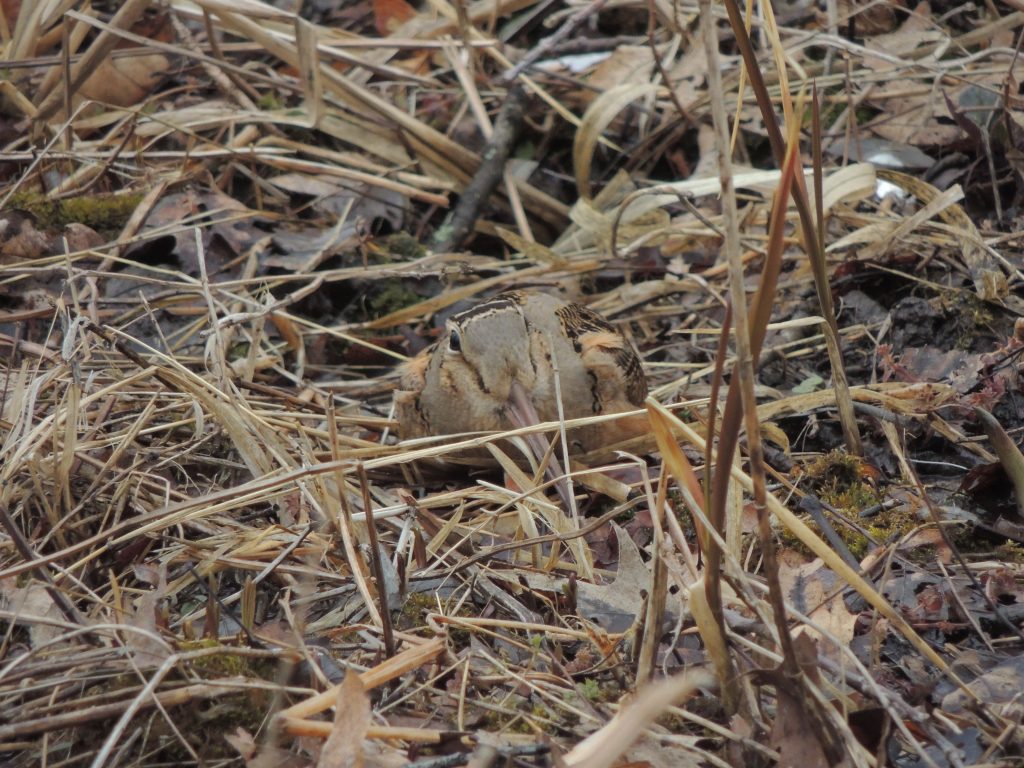
And just for fun and to further illustrate the exquisite camouflage of some birds here are two other candidates for invisibility: a Wilson Snipe ( choosing to be conspicuous) and a Red-necked Nightjar.
